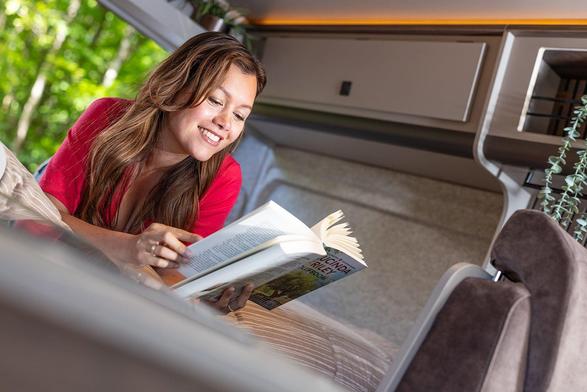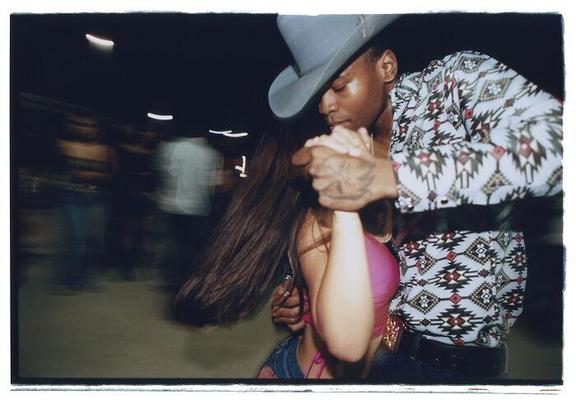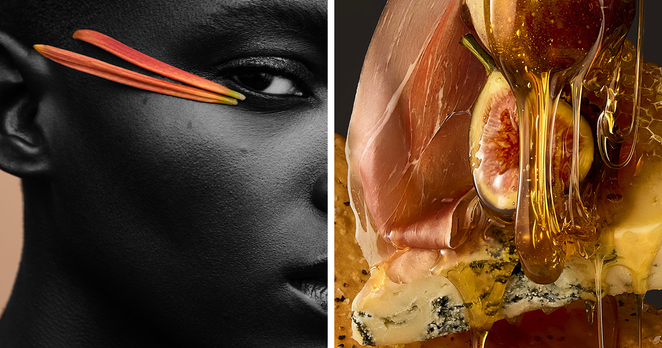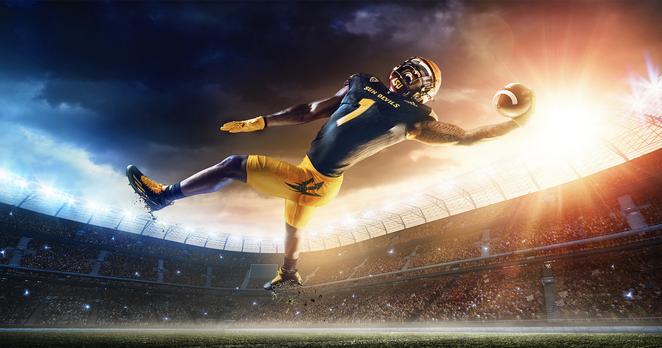The Spotlight Awards Celebrates the Very Best of Commercial Photography https://petapixel.com/2025/09/22/the-spotlight-awards-celebrates-the-very-best-of-commercial-photography/ #advertisingphotography #commercialphotographer #commercialphotography #Spotlight #News
#advertisingphotography
Meta Hits Record High on AI Pivot
Meta’s AI-first shift drives record $784.75 share price, outpacing Apple and Tesla, but heavy spending and ad-revenue dependence pose risks in a slowing economy.
#Meta #AI #TechStocks #SocialMedia #Zuckerberg #Magnificent7 #advertisingphotography
Read Full Article Here :- https://www.techi.com/two-takes/meta-platforms-stock-price-prediction-2025-ai-growth-analysis/
New images added to the gallery advertising photography:
https://www.studiovhf.com/reclamefotografie
#advertising #advertisingphotography #stagedphotography #lifestylephotography #camperlife
Judge Says Most Burger King Customers ‘Could Be Deceived’ by its Ad Photos https://petapixel.com/2025/05/12/judge-says-most-burger-king-customers-could-be-deceived-by-its-ad-photos/ #advertisingphotography #foodadvertisement #foodphotography #burgerking #mcdonalds #Culture #wendys #News #Law #ads
#SpotlightAwards2024: celebrating the finest in #CommercialPhotography (14 pics) https://zorz.it/SuGss | #SaumyaRatan #photography #ProductionParadise #SpotlightAwards #AdvertisingPhotography #creativity #photographers #winners
Capture stunning moments with Michael J Burgess's photography! 🎨✨
Buy high-quality prints or license unique images for editorial, commercial, or advertising use.
Elevate your space or project with visually striking photos that tell a story. Explore the collection today! 📸🖼️
👉 https://www.beitmenotyou.online
#PhotographyPrints #PhotoLicensing #CommercialPhotography #EditorialImages #AdvertisingPhotography #ArtForSale #VisualStorytelling #BuyPrints #PhotographyStore
1972 The Moody Brothers in a 1970s Advertisement
The image shows a promotional advertisement for a product or service, featuring three men posing together.
One man is holding onto another while they both look at the camera, and the third man has his arm around them.
They are dressed in vintage clothing that reflects 1970s fashion styles.
https://nocontext.loener.nl/fullpage/10-October1972-Page-114.png
#photography #illustration #madman #nocontext #sfw #RetroAdvertisement #VintageFashion #AdvertisingPhotography #MoodyBrothers #1972PopCulture #Men'sApparel.
🟢 Photographers, How Much Do You Make?
by R. Haggart at @aphotoeditor
#photography #Income #Wildlife #PortraitPhotography #Hospitaity #Editorial #AdvertisingPhotography #SportingLife #Architecture
https://aphotoeditor.com/2023/07/28/photographers-how-much-do-you-make-13/
Revisiting the Canon 1D, 20 Years Later
It was my first year in college. I was going out every day to teach myself photography, Harry Potter had just come out in theaters, and Canon entered the digital photography world with its very first fully backed flagship, the Canon EOS 1D. At the time, I was shooting on the Canon EOS D30, and didn’t see any way in sight of affording the 1D, but also didn’t think I really needed it either. Then came the moment that I first held one.
I was with my friends, Fred Miranda and Ben Horne, walking around the San Diego Wild Animal Park, and for the first time found myself having extreme camera envy. While the D30 that I was using was great and had helped teach me the balance of light and focus, the 1D was in a category all its own. After I returned home from California I spent months buying and selling camera gear, and even creating my own lenses, just to afford the 1D. Taking on a diet of bean and cheese burritos from a Mexican restaurant next to my apartment, I streamlined my expenses, and when some refurbished 1D’s came onto the market, I bought one.
I can still remember when it arrived. There wasn’t a formal box, as it was a refurbished unit, but rather a plain white box containing the body and accessories. Upon picking it up, it was a camera that felt solid, refined, and robust enough to build an entire career on… and that’s what I was lucky enough to do. I took it everywhere with me, from classes at ASU to summer vacation at my grandmother’s house in Illinois. It was actually the first camera I ever took to the train tracks with me, all the way back in 2002.
I would go out at all times of the night and day to learn it. From how to hand hold it for a long exposure, to knowing where the sensor liked the exposure to be, learning the ins and outs of it allowed me to be confident enough to apply for my very first photography job, an internship at the Arizona Republic. It is with the 1D that I would develop a career path and appreciation for the people that I would photograph. From celebrities and athletes to social workers, lab scientists, and even the pet of the week, I gave them all my time and attention behind the lens and 1D.
At the time, the mid-range zoom from Canon was the EF 28-70 f/2.8L, and was one that I wasn’t the strongest on. I felt the contrast and subject isolation were a bit difficult to nail, and I actually opted instead to shoot primes -- all primes. I carried with me a 35 f/1.4L, 45 f/2.8 TS-E, 50 f/1.4, 85 f/1.2L, and 135 f/2L everywhere I went. Yes, my shoulder was toast at the end of the day, but the images from the primes were worth the pain. Looking back at it now, I can understand why the other photographers at the newspaper looked at me oddly, but wouldn’t have changed anything if I could.
As time passed, I went through a number of camera systems from a lot of different companies, but a part of my heart lives with the 1D, as it helped build my aesthetic and confidence. That is why I spent a couple of years back around 2018 trying to find one in as close to new condition as possible. I knew the challenge would be tough, but after finding a new Nikon D1, I was driven to discover one, no matter how long it took. As fortune would have it, I did.
A Florida camera collector had one in new condition with almost no actuations on the shutter. I bought it immediately. Also, like with my Nikon D1, I was committed to using the camera to both see how it compares to modern platforms, as well as rekindle the nostalgia that came with such an important platform.
Over the period of a couple of years, I took it with me periodically to the train tracks and walked around just enjoying the sound of the mirror slap and feel of the shutter click. There is something so functionally simple about its ergonomics. The rear wheel is large and without a center button, the menu system is cryptic and you have to press a button just to remove the large nickel-cadmium battery. But God is it a wonderful thing to behold.
The heart of the EOS 1D is the sensor, a CCD. For those that haven’t shot on a CCD (as most of the market soon after the 1D went to CMOS), it is a sensor that is as beautiful as it is unforgiving. In many ways, shooting to an early CCD chip is like shooting chrome film. You get only a few functional stops of dynamic range, but the ones you have are nothing less than stunning. It is sharp, colors are punchy, and it can flash sync up to 1/500 of a second. However, like exposure, you have to be extremely careful to nail white balance, especially when photographing orange train engines as the orange in some images will shoot true, while with others it will drift towards red. Get the balance correct and you will be rewarded with images that hold up to any modern-day cameras, but at significantly less resolution.
This brings us to the question, “How does the twenty-year-old Canon EOS 1D hold up to modern-day cameras?”
It is a question that I started thinking about a couple of years ago when I started working with the 1D again. At the time, Canon had just released the 1DX Mark III and been kind enough to send one over for me to try out side by side with the 1D. What surprised me is that the two cameras are as much similar as they are different. The 1D is heavier but balanced well (especially with the 135 f/2L attached). The 1DX Mark III is lighter, as the industry has progressively dialed weight out of camera bodies with more complex materials over the last two decades. Also, while the ergonomics at first glance are near-identical, the 1DX Mark III has added more and more buttons for quick access. This helps photojournalists and sideline sports photographers to access even the most minute adjustment on the fly. For me though, I prefer fewer buttons and tend to make critical adjustments with shutter or aperture, but the more subtle ones I don’t mind hitting up the menu for. For me, shooting with the 1D was more conducive to relaxing, while the 1DX Mark III was more capable of creating.
This is where I had intended to end this story… and then came the R3.
To be honest, I didn’t know what to expect when first being briefed on the Canon EOS R3. I certainly didn’t look at it and think about the 1D, as the R3 is as modern looking as they come. Then, one day a box arrived from Canon with a production R3 inside, and as expected, I charged the battery (all while staring at the blinking dot) and immediately took it out to the train tracks. I went into this camera test with the idea in mind of how would it compare to the 1DX Mark III (or even R5), but within the first few minutes, realized I wasn’t shooting either one of those cameras, I was shooting the second coming of the 1D.
Creating with the R3 was like thinking, and muscle memory was fluid. I was again that 20-year-old kid walking around with a camera that he was proud of and could take on the world with. On a few occasions, I even took the two systems out together, one slung over each shoulder. In many ways, it was a perspective of photography that looked back at where we’ve come from and forward to where we will go.
All photos by Blair Bunting, taken on a Canon 1D.
About the author: Blair Bunting is an advertising photographer based in Phoenix, Arizona. You can see more of his work on his website, blog, Facebook, and Instagram. This story was also published here.
#equipment #inspiration #advertisingphotography #blairbunting #canon #canon1d #canonef #canonr3 #canonrf #classic #commercialphotography #landscapephotography #retrospective #revisit #trains
How to Photograph and Composite an Advertising ‘Cosmetic Drip’
In this 15 minute video, we break down a step-by-step approach to capturing the images needed to composite an attractive cosmetic drip.
We start by capturing the cosmetic portion of the image by extending the lipstick out of the tube as far as possible. With a cheap nylon diffuser and a speedlight, we can create a large highlight on the left portion of our cosmetic.
Not only does this flatter the lipstick but it will also provide us with a nice light source for the drip. A thin edge light created with an additional stripbox and speedlight combo will carve out our cosmetic (and drip) on the stark black background.
To capture the motion of the lipstick "melting" into a drip, we used a wooden stick and red acrylic paint. It is important to match the color of the acrylic paint with the cosmetic, for an easier time in post-production. Carefully using a two-second remote mode, we applied acrylic paint heavily on the wooden stick to begin capturing the frozen motion.
It took a few times for an attractive drip to time out perfectly, but once we capture an ample amount of options we have everything needed to complete the composite. It may be necessary at times to use an additional reflector to bounce light into the scene, since we are mainly using a light source from one direction.
To combine the upper cosmetic with the lower drip image, we used a variety of techniques in Adobe Photoshop. We begin by simply masking the products and crudely attaching them together to get a basic visual to work with. By using a tool known as the Warp Mesh Tool, we can individually twist the layers around to connect seamlessly and complete the illusion of the cosmetic melting.
It might take a few tweaks to leave the image in a way that is visually seamless, but once the illusion is created it brings together all the beauty from the lighting and leaves a stunning visual on a stark black set.
_About the author: Dustin Dolby from workphlo, is a Canadian product photographer and educator on YouTube. You can find more tutorial’s on Dustin’s workphlo YouTube Channel or Skillshare, and purchase their custom light stand attachments on the workphlo online shop. _
#educational #tutorials #walkthroughs #advertising #advertisingphotography #cosmeticdrip #cosmetics #drip #dustindolby #lipstick #makeup #postproduction
How to Dramatically Light a Group of Products with Three Speedlights
This tutorial explains how to dramatically light a hair product group -- or any other health and beauty product -- using entry-level gear and a home studio. The accessible and repeatable workflow delivers vibrant and punchy images that are catalog-ready.
On his YouTube channel Workphlo, photographer Dustin Dolby shares tutorials and advice on various commercial product photography setups, some of them featuring just one light. In one of his latest videos, he showed how to build up a well-lit product shot of a group of hair care bottles in varying sizes and colors.
Dolby sets out to create what he describes as a "silky" shot with a slight glow to it -- a popular aesthetics choice for other hair care brand shots -- using three speedlights instead of more expensive studio lights. Before setting up his lights, Dolby makes sure that the haircare bottles are positioned so that everything, such as nozzles and bottle caps, is straight and facing the camera head-on to save fixing it up in post-processing.
Dolby uses a thin black acrylic surface -- that he also sells on his Workphlo shop -- which produces sharp reflections of the products. First, he sets up one 8 x 36 inch strip box and a Yongnuo speedlight to the left of the products and another strip box and Speedlight directly opposite and placed symmetrically.
To help even out the light on the bottle labels, Dolby adds two round basic nylon diffusers in front of the strip boxes to help catch the light passing through and help distribute it better. If the image doesn't retain enough contrast, he recommends cutting a set of paper in the shape of a small window and placing it in front of the lens, which helps block unwanted light.
An advertisement shot like this requires a step-by-step process of building up the set and checking each shot to see what needs to be adjusted or if additional exposures need to be shot for post-processing. As it's a static setup, it's easier to make minute alterations throughout the shoot.
Before adding a colorful back glow in post-production, Dolby introduces one last exposure that captures the light reflected in the front of the scene by using a reflector card. This adds a final touch to the product labels and the bottom of the bottles and illuminates them, and is a simple step that can make the products stand out even more.
In the video above, Dolby shares how he adds the brand's purple splash of color -- sampled from the bottle cap using the eyedropper tool -- behind the products in Adobe Photoshop with the help of a radial gradient. He uses a mixture of actions that involve creating masks, painting with a brush, feathering the edges for a softer natural look, and more, to reveal a polished final edit.
More of Dolby's product photography tutorials can be found on his YouTube channel and Instagram.
_Image credits: Photos by Dustin Dolby and used with permission. _
#equipment #postprocessing #tips #tutorials #advertisingphotography #commercial #homestudio #product #productphotography #productshoot #studio #studiophotography
Lightograph Unveiled: The ‘Next Evolution of the Photograph’
Photographer Jeremy Cowart has created what he calls a Lightograph, a patent-pending evolution of both the cinemagraph and standard photography that moves light through a still photo without adding any motion or shift in perspective.
Cowart touts the Lightograph as a wholly new form of art because it is not a motion picture because there is no motion, and it's not a standard photograph because the light can change and evolve. For him, the Lightograph is a breakthrough method for visual art that allows light to tell more than one story in a still image and can "forever change what is possible in portraiture."
The finished photos are at first blush akin to what has been done in the past -- especially with cinemagraphs -- but after closer inspection, the differences are stark. Cowart says that he has been using this method for years, but it wasn't until recently that he realized how unusual it is.
"I actually did the entire process in 2014 but didn’t realize what I had on my hands until now," he tells PetaPixel. "It wasn’t until the NFT boom over the last couple of months that made me start digging harder, wondering how I could bring motion to photographs and portraits. It was then that I realized 'Oh, I’ve been doing this for years and didn’t even how special this process is.' It just needed a couple of tiny tweaks to flesh out the process and make it what it is today."
Cowart says that as amazing as photography, cameras, and light are, he found that constantly shooting the same way would lead to boredom.
"There are only so many places you can place a light, right? I can’t shoot the same lighting on a white seamless all day. A lot of photographers love those shoots. I can’t stand it. I think my natural A.D.D. is always driving me to be curious and figure out what’s next. How can I keep evolving and mix things up to make digital photography evolve?"
To his knowledge, this process has never been done before, at least not with portraiture. He also says that no computer graphics or 3D software is used to make these photos.
"This is truly a new method of art-making and analog photography," he says. "Light can now tell multiple stories in a single image. It can show the hero and villain side of a person in the same portrait with a simple shift of light. Humans are multi-faceted. We’re constantly changing and evolving.
"A Lightograph represents our evolving dynamic as humans. It can show all our emotions at once. One Lightograph can go from super flattering to scary to dramatic to warm to cool back to flattering. And so much more. The possibilities are endless. Lightography can also be applied to almost every genre of photography. So it can work for commercial, lifestyle, fine art, fashion, beauty, editorial, studio, music, entertainment, families, travel, business, headshots, automotive, stock, products, architecture, even babies and pets if they can stay still or are sleeping," he adds with a laugh.
Cowart believes that there are huge implications for this method in advertising photography because it adds so much more depth and interest to a still image in a way that people simply aren't used to seeing.
"I keep hearing people say, 'I can’t stop looking at this,'" Cowart says.
One challenge with moving images is how they are shared since Lightographs are more than a standard photograph. Additionally, the finished result isn't quite a movie, either. Cowart says he believes these could find a home in digital media.
"I see it as the future of digital media. So, magazine covers for example. Future issues of any magazine could have Lightographs as their covers. Imagine scrolling on your iPad, reading an article and as you scroll, the lighting is evolving as the story evolves," he says. "This is just one example of thousands that could be applied. Imagine driving past a digital billboard and the light changes completely in those three seconds that you drive past it. It’s incredibly interesting and exciting. Netflix movie posters could be Lightographs that evolve as you sit on your couch and scroll through movie titles."
While he is withholding how he creates these photos for now, he does intend to share his method in the near future.
"I just thought it was important to introduce the medium first," he explains. "It’s a significant development in the history of photography. I remember when the cinemagraph was introduced in 2011. I was so fascinated by it and amazed that a new form of art could be introduced when it seems like everything has been done before. I never thought I would have my own important discovery. But I always say, 'the more you learn technically, the more you can achieve creatively.' That thought has been true for me. I’ve spent thousands of hours in my studio over the last decade playing with my Profoto strobes and Canon DSLRs. It’s so cool that all that play-time has translated to an innovation like this."
Cowart does reveal that it's a detailed and technical process, though and says that multiple factors play a part in how long it takes to make one of these images.
"It’s quite a technical process. Seasoned, experienced photographers who understand lighting will catch on quickly. In fact, I’m sure many of your readers will figure out what I’m doing just by looking at it. They’ll be able to reverse engineer the general idea," he says. "But there are so many subtle nuances and tricks that go into it that are not so easy to figure out. I’m amazed it hasn’t been done before and I’m so honored I get to introduce it to the industry. It’s truly a new, unique form of art-making."
Cowart says that he plans to launch a tutorial on how to create Lightographs and if anyone is interested, they can sign up for his mailing list on the Lightograph website.
Additionally, Cowart will release several NFTs on Foundation that use this method starting on July 15.
#features #inspiration #news #advertisingphotography #cinemagraph #different #evolution #jeremycowart #light #lighting #lightograph #new #newmethod #portraits #portraiture #unique







